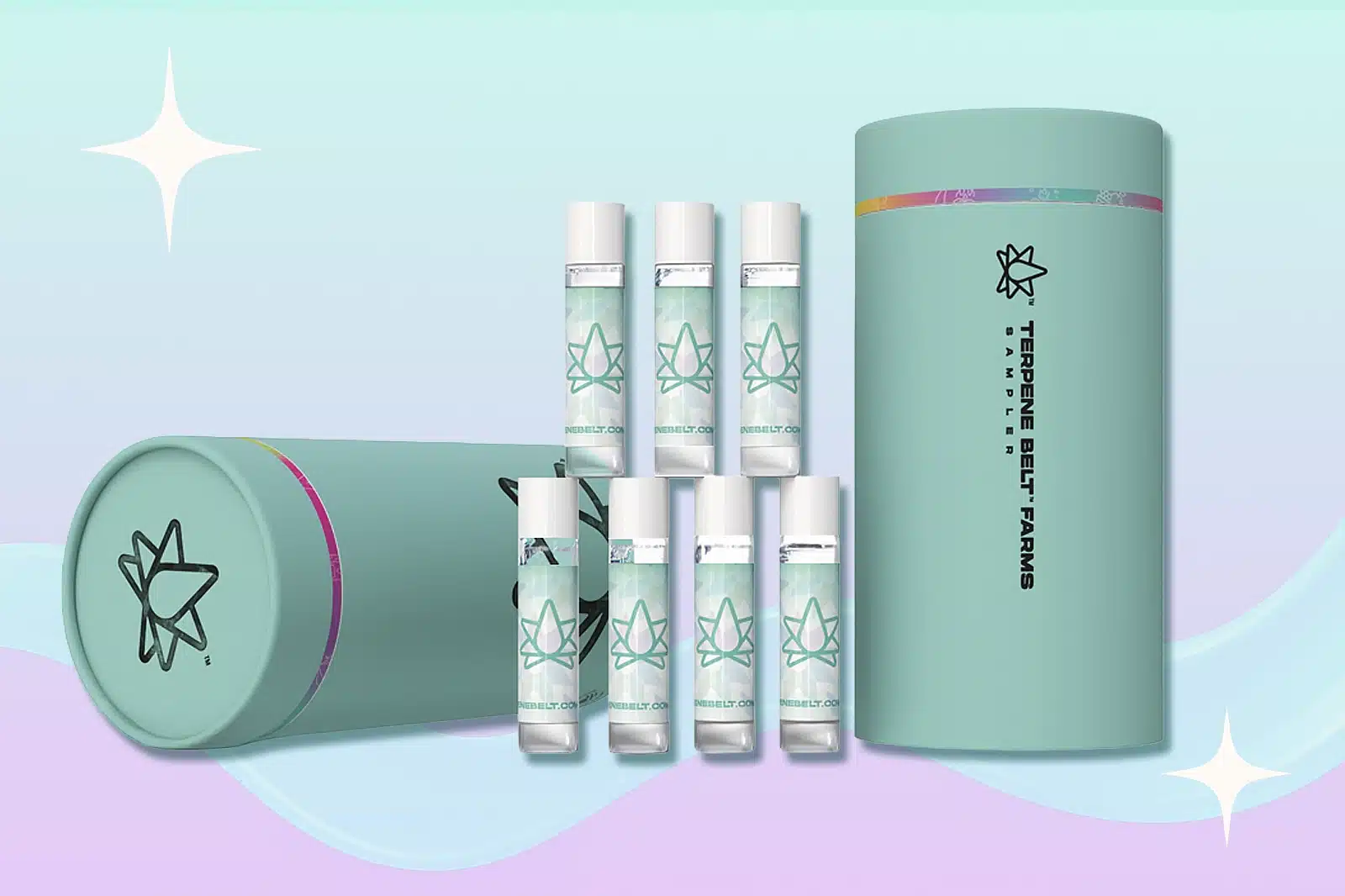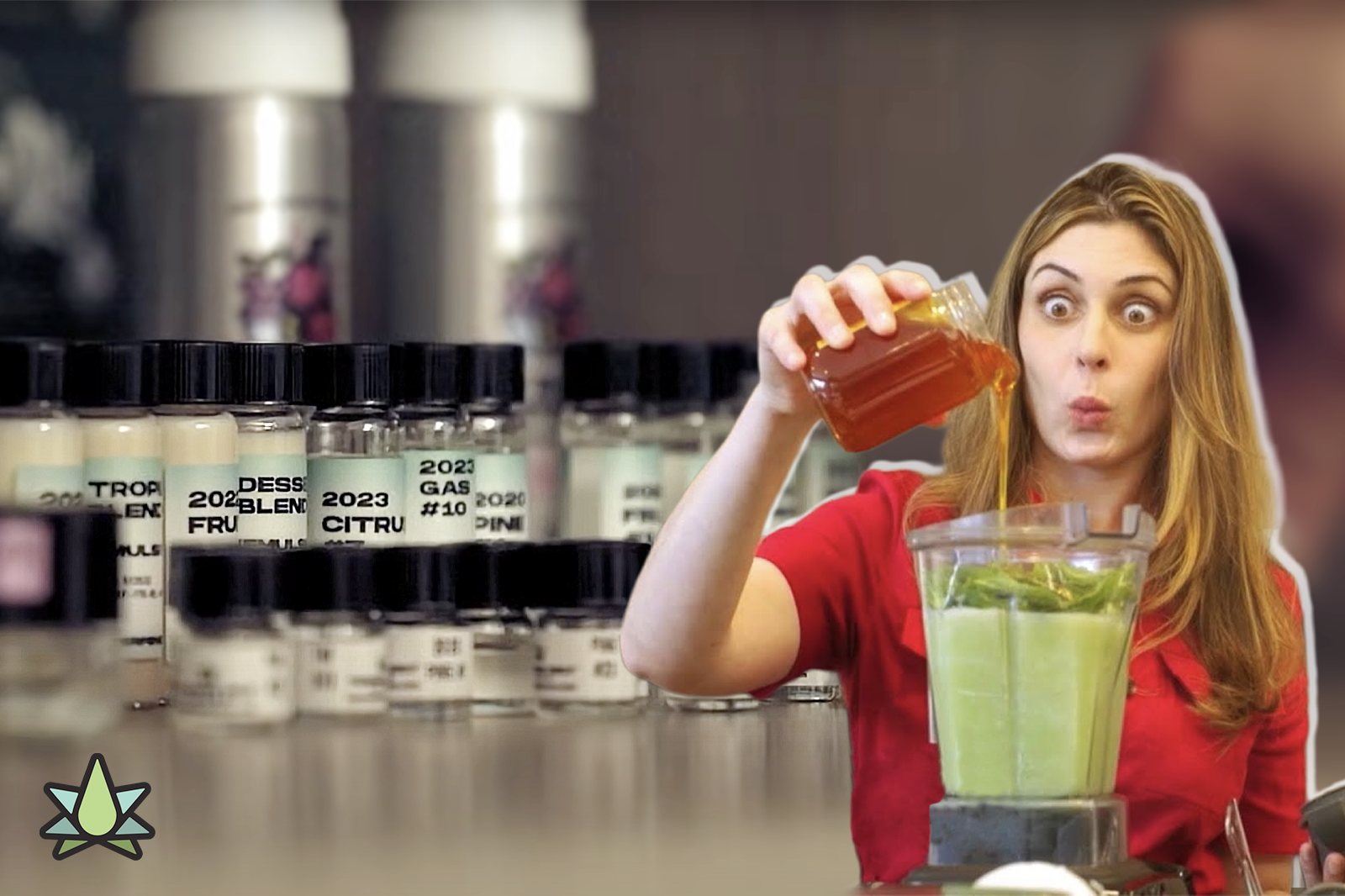When I started working in California’s medical cannabis industry in 2009, I knew that cannabis would be sold across the globe in convenience stores, specialty shops, and pharmacies alike. The inevitability of that future captivated my ambition, but I struggled to resolve how that future would take shape. As years passed and I explored more facets of the industry, my visualization of that future gradually increased in resolution. Today, I would like to share some of my version of that not-so-distant future as we honor the spirit of the California industry and share how we are weaving it into the newly forming global cannabis consumer packaged goods market.
Complete Cannabis
When I refer to cannabis, I am referring to complete cannabis. This is a term we use at Terpene Belt Farms to describe the marriage of cannabinoids with complex cannabis essential oils in ratios that create inhaled flower-like experiences. There is no substitute for that marriage. Complete Cannabis can be expressed in every product category but unfortunately is not as often as one would hope. The rise of refined delta-9 THC oil as an input to manufactured goods has promoted innovative use cases but has diverged from the underlying benefits that are derived from complete cannabis. These benefits have been loosely referenced as the entourage effect but that term leaves much to be desired. In a recent University of Arizona study, Dr. Strichter was able to demonstrate that cannabis-derived terpenes alone have a positive response in pain reduction, cannabinoids alone have a positive response in pain reduction, and the combination of the two resulted in an amplified benefit. The key piece here is that terpenes alone have the capacity for mood modulation, carefully chosen words to avoid making the claim that essential oil has a specific health benefit. The FDA acting in lock step with big pharma has vilified complete plant medicines as unsafe and only considers isolated compounds as viable treatments.
I made a jump in terminology that I would like to cover in more depth. Terpenes can be found in essential oil but essential oil contains much more than terpenes. Essential oil more broadly describes a varied group of compounds that are extracted from plants of which terpenes are just one component. We refer to our products as essential oils rather than terpenes because we are keen on driving the holistic nature of the oil. The word essential oil is a truncated common language expression of quintessence, which comes from the Latin phrase quinta essentia. It refers to the fifth element, spirit. The spirit of the plant carries the flavor, fragrance, and effect modification that is diminished when the spirit is separated from the cannabinoids. Complete cannabis is cannabis that is rich in spirit. That marriage was not highlighted enough during the medical marijuana era because nearly 100% of products were complete in nature with flower leading the way. Today, new form factors are taking market share away from the flower-based to those flower-based.
Tobacco Tales
Here is a good point to take a tobacco tangent as there are plenty of insights to be drawn on from the development of that industry. Many indigeneous American tribes believe that tobacco was the first plant given to the people of the First Nation and the activator of all plant spirits. It plays a lead role in many ceremonies and is still the leading plant medicine used in Latin America. So how did this great plant which has many healing powers turn into the poison we know it as today? Through the manipulation of tobacco products to include non-tobacco inputs. Sound familiar? It is happening with vaporizers and pre-rolls as cannabis proliferates. We stand at a fork in the road. One path leads us to repeat the mistakes made in tobacco with a watered-down poisonous bastardization of cannabis available on every corner in the world, the other road leads us to complete cannabis becoming the prevailing product available on every corner in the world. We intend to see complete cannabis win and our fresh never frozen cannabis essential oil supply chain is ushering in a new era of maturity.
Convenience for the Win
Vaporization is an alternative to combustion that is winning market share in both cannabis and tobacco. The obvious driver of growth is the absolute convenience of oil vaporizers but our focus on the vape category is grounded in a two-part thesis.
(1) A California cannabis derivative supply chain has global reach. The flower supply chain does not. The shelf-life stability of flower lends itself to regional production centers. Cannabis derivatives carry an almost unlimited shelf life in bulk and significantly longer shelf life in their final form. Live plants and products produced from live plants express the complete spirit as it exists in vivo, some of which is lost during the traditional flower curing process . A well manufactured CPG can deliver inhaled-flower like experiences without the shortcomings of flower and its supply chain limitations.
(2) Vape is the leading delivery method for complete cannabis. As a product category, it has a high terpene to cannabinoid ratio around 10% on average. Vape’s demand for cannabis derivatives is by far and away the highest of any category. In a vape, a brand has the flexibility to mix any combination of terpenes with any combination of cannabinoids, unlocking an unlimited number of potential products each with its own effect. This is a major advantage over flower products or derivatives of single origin, which can only create new permutations of compounds on genetic breeding timelines.
Standardizing the Standard
The oils inside vaporizers today would give an FDA regulator a bout of anxiety. Labs that work with cannabis are poorly equipped to determine what cannabis derivatives are composed of beyond the primary constituents. They are challenged with identifying more than the 30 or 40 terpene compounds because many of the less common compounds found in cannabis do not have publicly available reference standards. Many labs face similar challenges accurately identifying cannabinoids and their isomers. Terpene Belt Farms is committed to the research of these lesser-known compounds. We intend to bring in a new era of understanding to the cannabis derivative market first with reference standards followed up with commercially available isolates. We understand single-origin single-vintage oils are only the first step to support the needs and opportunities within the cannabis supply chain. We are committed to creating the first of its kind supply of isolates and standardized groupings that drive consumer preference towards cannabis derived inputs.
Don’t Die, Innovate
For every great reason that we believe vape to be the form factor that will win the space, there is an equally potent threat to its future. Regulatory bodies are just beginning to grasp the eCigarette industry, and their initial approach appears to be limiting. If we read the tobacco leaves, we should expect an extinction level event for the 510 dominated vape industry. Repeatedly heating oil in ceramic cores at high temperature creates toxic chemicals at levels that the FDA is not going to be comfortable with. This is not intended to be alarmist; the entrepreneurial spirit in cannabis will solve this problem as necessary with a likely consolidation onto a few forward-thinking hardware platforms and educated standards.
Anti-Commodification Club
Cannabis Essential Oil is a vintage product akin to wine, think Terpenes with Terroir. California is squarely in the wine producing belt that exists between 30 to 50 degrees in the Northern Hemisphere and -30 to -50 degrees in the Southern Hemisphere. The climate here is world renowned for producing excellent wine and even more sought after cannabis. The world has not noticed California’s ability to grow stems and leaves. California is hailed as the leader in cannabis production because we are the leaders in essential oil production and preservation.
Refined cannabinoids are a commodity and will be produced domestically in low-cost regions in midwestern states. Further, the international competition in commodity markets will be fierce. California needs to thread the needle between a regional vintage production strategy and scale to meet the global demand that exists for its products. This leads us to believe THC and other commoditized derivatives produced in California will not be price competitive internationally. If California is going to remain the leader, we need to recognize what will extend our supply chain beyond niche flower. California has the infrastructure and brand to remain the leading cannabis producer, it just may come in an unexpected form.



